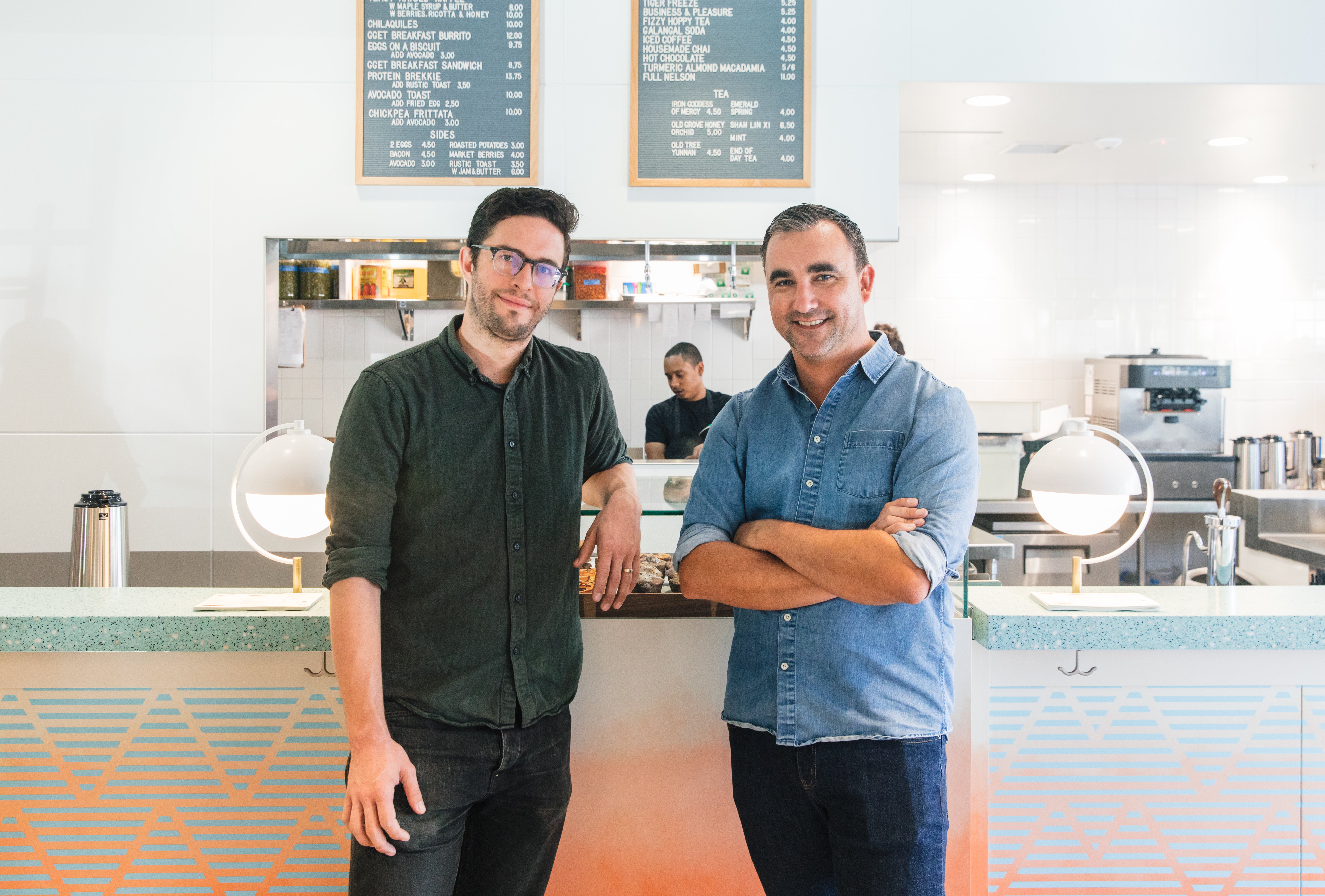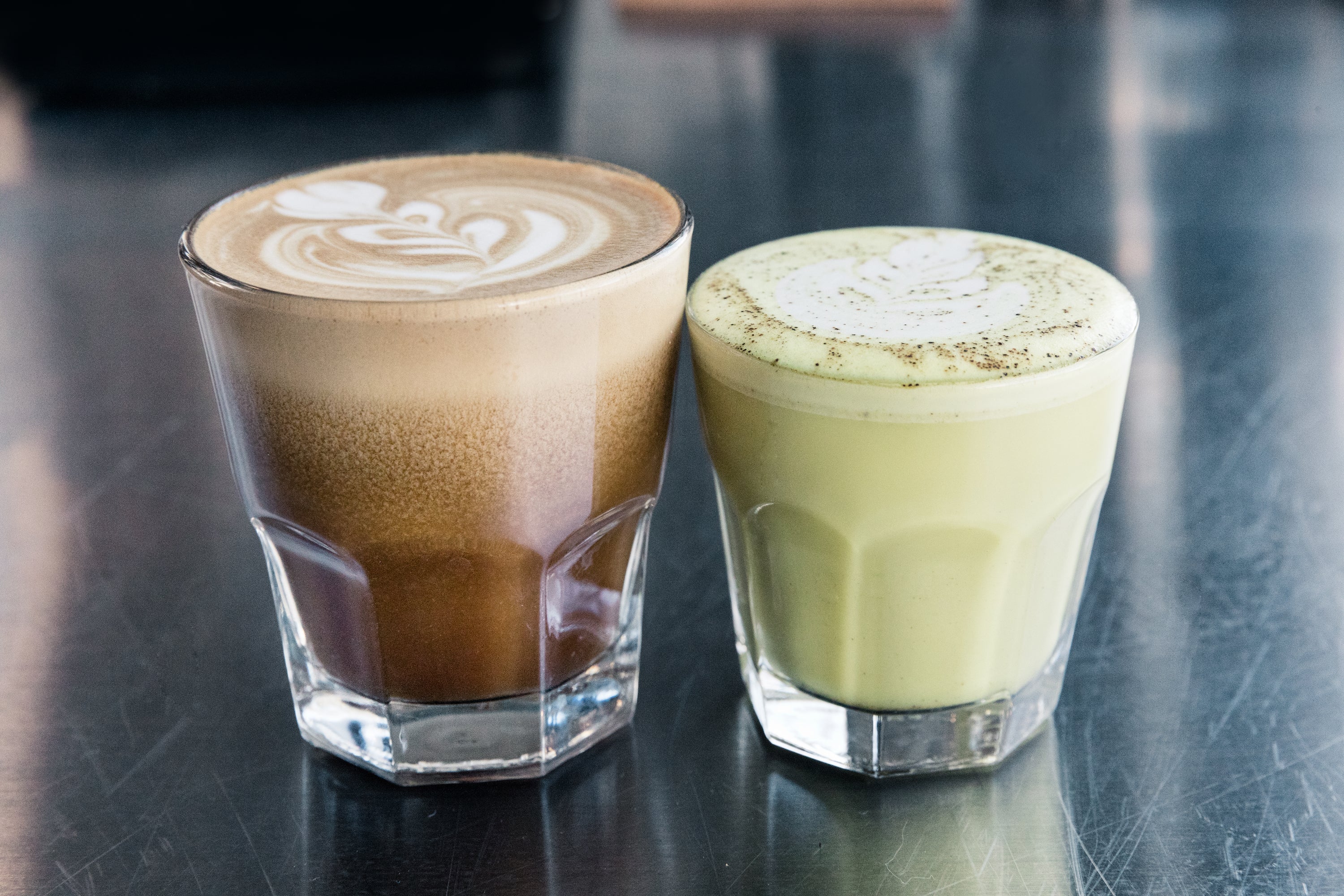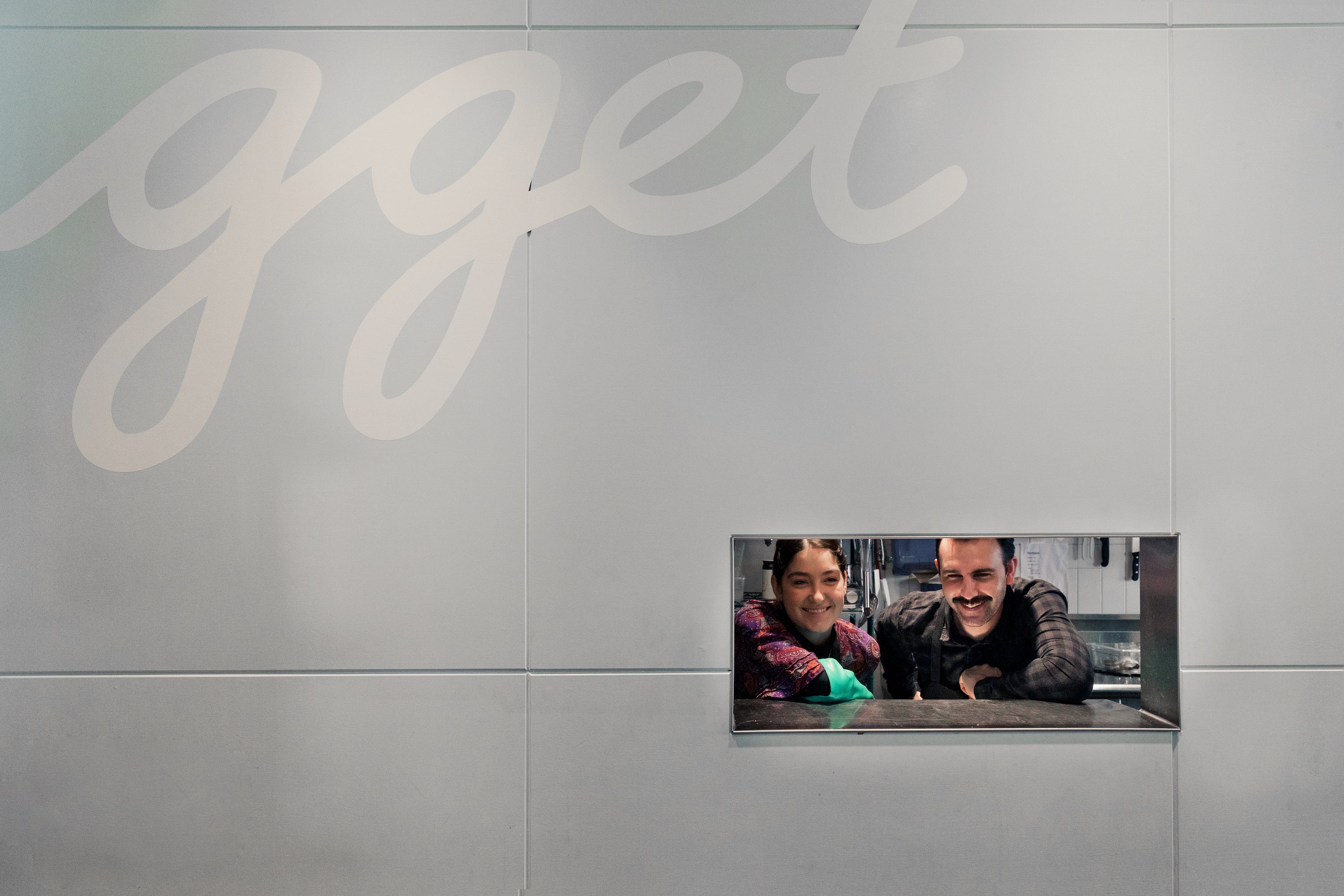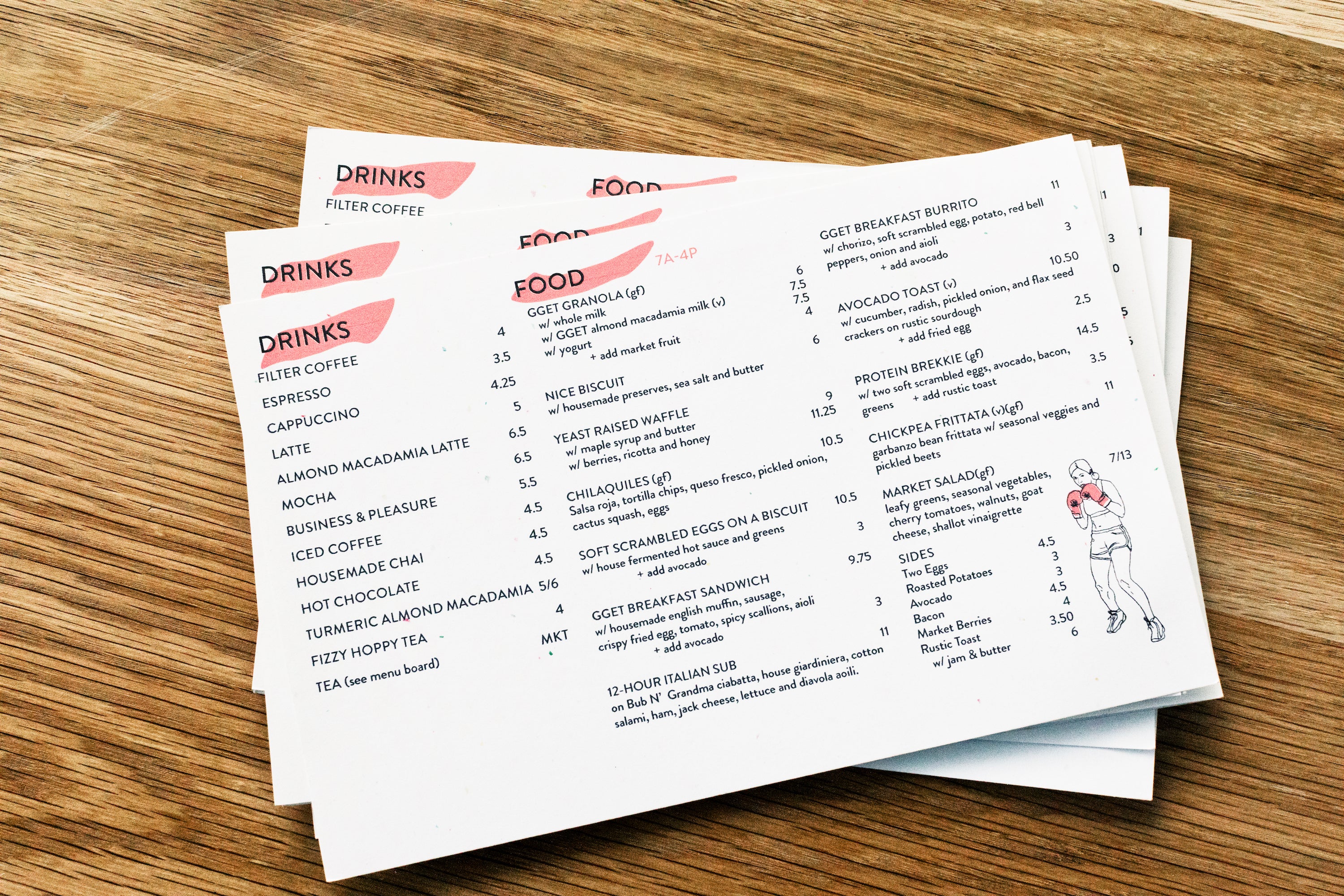How one innovative company is altering the way Los Angeles drinks, and lives, coffee.
Today, delicious coffee—like a creamy, amber-tinted cappuccino or a hand-shaken iced latte—is something the lion’s share of urban-dwelling Americans expect on every corner, especially in the great city of Los Angeles, pocked with trendy neighborhoods like the Arts District and Highland Park and stretching to the beach in Venice. Institutions and upstarts like Verve, Alfred, Blue Bottle, Commissary, and Tierra Mia will source, roast, and prepare very good coffee. But one of the most unexpectedly intuitive companies leading the charge is Go Get Em Tiger, which has risen to become perhaps the most highly regarded café of L.A.’s coffee scene, in large part thanks to the visionary work of its founders, Kyle Glanville and Charles Babinski.
Even relatively recently, it wasn’t easy to find great coffee in L.A., with just a few independent shops like Cafecito Organico, Jones Coffee, and Conservatory for Coffee touting locally roasted beans like it was still the early ’90s. But in 2008, when Chicago-based company Intelligentsia opened its Silver Lake flagship café, it was a seminal moment in L.A.’s coffee situation. One of the forces behind the opening was Glanville, a veteran of Seattle’s beloved Victrola Coffee, a early-third-wave shop with carefully roasted, well-sourced beans that became synonymous with the Emerald City’s coffee obsession.
Along with Intelligentsia’s founder, Doug Zell, Glanville helped build Intelligentsia into one of L.A.’s most respected coffee companies. Intelligentsia’s Silver Lake and Venice shops continue to reach the fashionable set with a nice blend of style and substance, from symmetrically poured lattes to single-origin coffees sourced from Peru and Ethiopia to hand-brewed pour-over coffee. It was during these early years that Glanville, who had represented Intelligentsia in the 2008 U.S. Barista Championship and took first place, began working with a young barista named Charles Babinski, who worked at Intelligentsia’s Chicago cafés and himself went on to represent the company in multiple barista competitions.
After working a collective dozen years at Intelligentsia, Glanville and Babinski put their knowledge into their own coffee company. The duo first debuted an eponymous espresso bar as a pop-up called G&B Coffee in 2012 at L.A.’s mega-popular breakfast destination SQIRL, eventually moving to a permanent location at Grand Central Market. They eventually expanded to a branded shop called Go Get Em Tiger, which first opened in Larchmont in 2013.
Babinski eventually went on to win the U.S. Barista competition in 2015 and earn the runner-up position in the 2015 World Barista Championship. Next, they opened a Los Feliz location of Go Get Em Tiger in 2016 and most recently doubled in size by adding cafés in the Arts District and Highland Park in 2018.
One subtle innovation that signals a break from traditional cafés or even third-wave coffee shops that’s evident at G&B Coffee and Go Get Em Tiger is their bar-style service. Instead of waiting in a queue or stepping up to a register, customers can walk up to the bar and order from the barista in front of them, just like ordering a can of IPA at a bar. Glanville regards this as an example of the kind of small difference that can make a big impact: “Where you can excel is in the 1 percent, the extra three- or four-yard gains.”
Ordering at a bar felt more intuitive and personalized, compared to lining up in front of a cash register. It represented a pleasant interaction that defied the aloof/irritable barista stereotype. New York City–based food writer and coffee journalist Oliver Strand, who declared G&B Coffee’s iced macadamia-nut-milk latte “one of the best iced lattes in America” in The New York Times in 2014, thinks highly of the cafés. He says that while they understand every nerdy, extreme, wonky detail of coffee orthodoxy, Glanville and Babinski just want customers to have a good time.
Despite naming Glanville and Babinski the “high priests of coffee,” Strand tempers the acclaim. “They don’t expect you to walk the last mile on your knees before you can take communion,” says Strand, emphasizing that in the end, the point of cafés like theirs is to have fun. Instead of pedantic baristas, austere settings, or mopey music, Strand says the duo want people to have the best coffee on the planet but still feel welcome and comfortable. And it has worked incredibly well.
Another area that Babinski and Glanville rejiggered was more distinctly portioned batches of brewed coffee—smaller compared to the massive jugs at Starbucks or Coffee Bean, but also larger than single-serving pour-over coffee popularized at third-wave shops. When Babinski and Glanville started brewing in batches using heavily programmable machines that can manipulate water distribution, timing, and other variables, they argued that it was more consistent, predictable, and ultimately better-tasting than pour overs. The move to batch brewing wasn’t exclusive to Glanville and Babinski, as the coffee machine manufacturers like Fetco and Curtis themselves helped propagate the brewing technique to specialty coffee shops, it still felt like a move backward.
Some derided the move as an ironic return to the kind of machine that sits in every corporate office kitchen, but tinkering with the timing, grind style, portion, and even water quality to produce a superior brewed coffee was the big selling point. Glanville and Babinski also eschewed roasting their own coffee for years, relying on Vancouver’s 49th Parallel and Portland, Oregon’s Heart Coffee to supply beans, crystalizing the enviable “multi-roaster” approach that so many cafés have tried to emulate and that some, like Paramount Coffee Project (with locations in Melbourne and L.A.), have nearly perfected.
Batch brewing seemed practical from an operational standpoint, and it also allowed baristas to fulfill orders more quickly, allowing them time to explain the nuances of a certain single-origin coffee or chat up a customer about their day. “We centered everything on the customer experience,” recalls Babinski, who focuses barista training on concepts like “saying yes.” It means finding the best solutions to requests instead of pooh-poohing or just straight-up saying no.
Austin-based food writer and coffee obsessive Dan Gentile says he consistently has the best cups of coffee in L.A. when he visits. “It’s their service,” he says. “They immediately offer you a sample of both batch brew coffees to see which you prefer. Batch brews are usually relegated to second-class status at third-wave shops, but Go Get Em Tiger is proof that that doesn’t need to be the case.” However, Gentile does think the bar-style service is something average customers probably don’t notice or care about: “There’s a cool factor involved, though coffee nerds certainly praise the model.”
Babinski and Glanville consistently tried to introduce different, often subtle, innovations to their cafés: pre-ground, pre-weighed espresso beans, which they assert do not negatively affect the flavor of the coffee; gravimetric espresso shots, which are measured to a precise weight by stopping the brew at an assigned metric; and even flavored beverages, riffing on the Starbucks approach, but with better ingredients like their popular Thanksgiving Day specials of peppermint mochas and eggnog lattes.
They have plans to open at Row DTLA, a massive commercial repurpose project that already includes Tartine Manufactory and a slew of other restaurants, shops, and offices. And they’ve locked in a lease in Culver City that should sit across from Sony Pictures Studios and below a WeWork shared-office building.
All this expansion raises the question of what trajectory Glanville and Babinski hope to take with their cafés. Numerous other third-wave roaster-cafés, like Intelligentsia, Blue Bottle, and Stumptown, took on venture capital investment and big-name investors and eventually sold to multinational conglomerates—namely JAB, which owns Intelligentsia, Stumptown, and Peet’s Coffee. It’s a boilerplate model of consolidation and acquisition not unlike what happens in the craft-beer world. But Glanville insists that’s not the goal. In the same way that Stumptown became synonymous with coffee-obsessed Portland, Oregon, Glanville says that their main interest is being the standout coffee shop of Los Angeles. He dreams of people associating Go Get Em Tiger with L.A. in the way that burger mavens connect In-N-Out with Southern California, hoping for regional prestige versus global domination.
Roaming around their fairly massive office and roasting facility in industrial Vernon, a municipality within L.A. County just southeast of downtown L.A., it’s easy to see that kind of expansion potential. Go Get Em Tiger started roasting its own coffee in mid-2018 with the intent of only selling directly to consumers or supplying its own cafés—and despite the owners’ dedication to volleying between multiple roasters, they found the need to roast their own once it made financial sense. They’re also in the process of building a 4,000-square-foot commissary kitchen that will supply each café with pastries, snacks, and prepared food.
All of this growth came from an infusion of capital from new investors, whom Glanville and Babinski declined to name except for Yoram Heller, an entrepreneur who’s also invested in everything from the burgeoning cannabis industry to restaurant chains like Sweetgreen.
Still, the coffee guys insist they retain all creative control and a clear majority financial stake that ensures a dedication to what’s made them successful so far.
It could take another five to ten years, or perhaps a generation, until Go Get Em Tiger reaches the level of adoration and association that a brand like In-N-Out enjoys in Los Angeles, but the company seems dedicated to growing sustainably throughout the region and in all of its unique neighborhoods instead of pursuing a more aggressive expansion. With a focus on detail and customer service, while still exuding a bit of California cool, Glanville and Babinski are paving a road toward establishing Go Get Em Tiger as one of the most important coffee brands in America.





